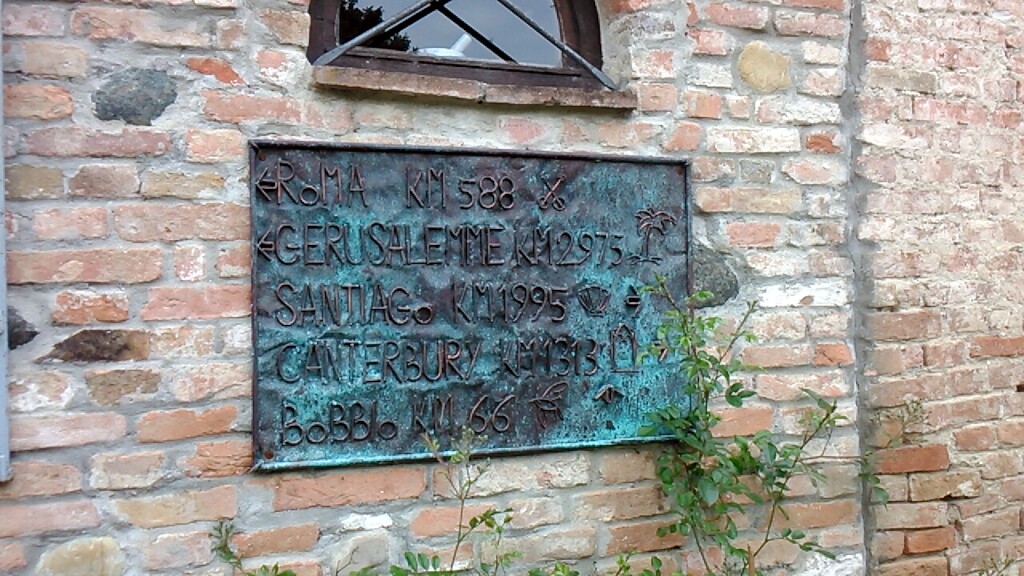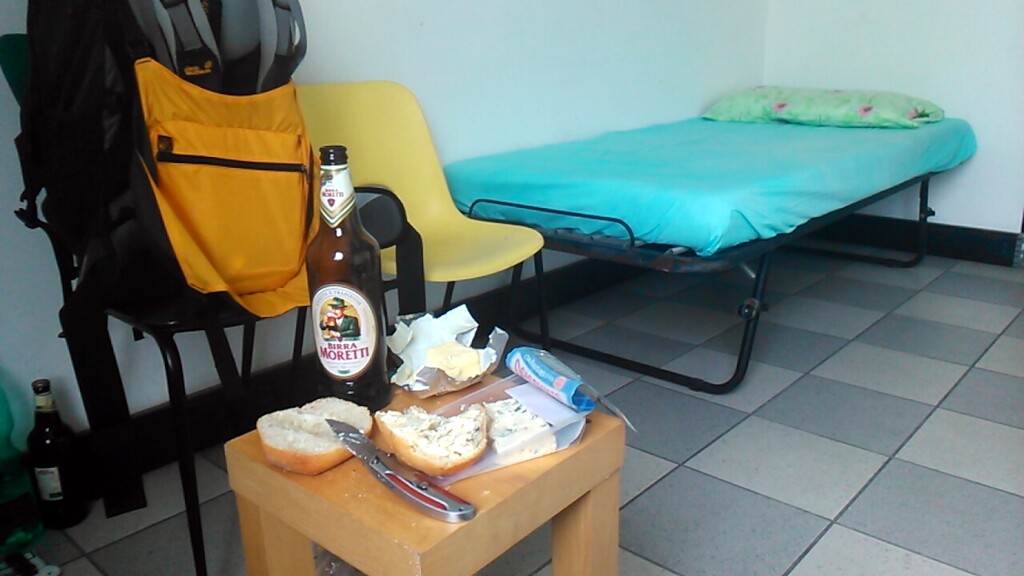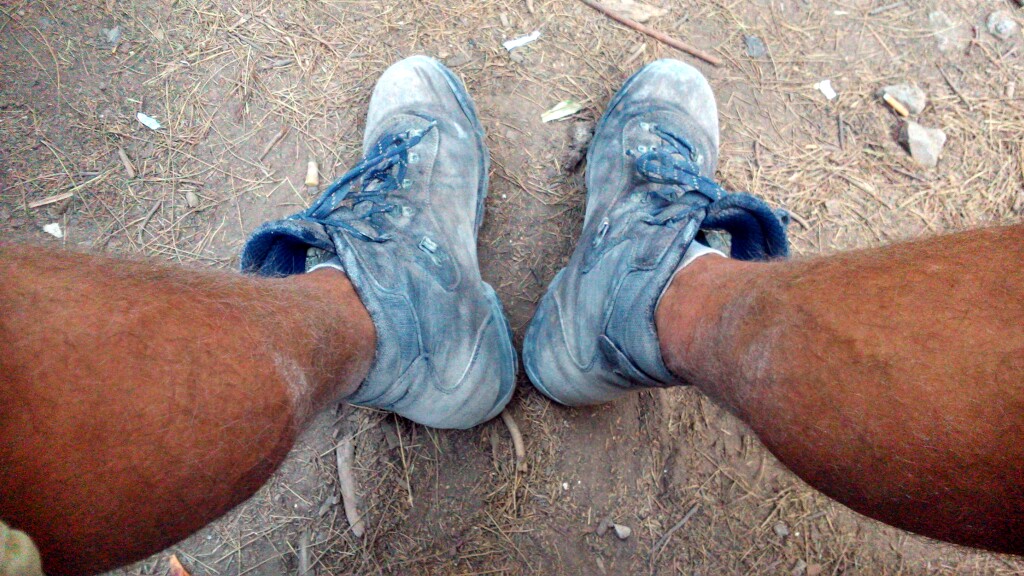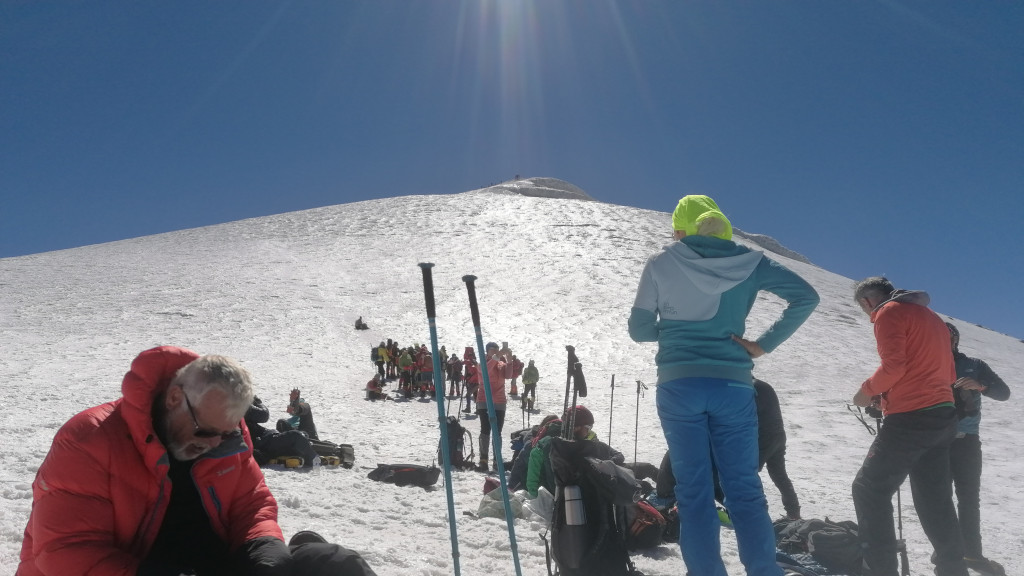When? Where? How long?
 The recommendations here are only subjective opinions, for us this has proven itself time and again. But everyone feels and thinks differently, so it helps someone
or not. So when and where? If you are not currently self-employed or pensioner or have a sabbatical year, you are dependent on the approved holiday as an employee.
If we want to hike in warm areas (Italy, Spain, Portugal etc.), we try to do it in spring or autumn. If it doesn't work out at the time, then only summer vacation remains.
But then you carry a lot more drinks with you. Only the overcrowded Camino francés (2019: about 190000 pilgrims) I walked
exceptionally in winter, in summer I did not want to suffer this. And if you even have the opportunity to get out completely for months or years, yes, the lucky ones will
not care about the 3 questions 🙂.
The recommendations here are only subjective opinions, for us this has proven itself time and again. But everyone feels and thinks differently, so it helps someone
or not. So when and where? If you are not currently self-employed or pensioner or have a sabbatical year, you are dependent on the approved holiday as an employee.
If we want to hike in warm areas (Italy, Spain, Portugal etc.), we try to do it in spring or autumn. If it doesn't work out at the time, then only summer vacation remains.
But then you carry a lot more drinks with you. Only the overcrowded Camino francés (2019: about 190000 pilgrims) I walked
exceptionally in winter, in summer I did not want to suffer this. And if you even have the opportunity to get out completely for months or years, yes, the lucky ones will
not care about the 3 questions 🙂.
Which path one chooses may depend heavily on experience, physique and expectations. The choice is huge. Of the more well-known routes, the
Camino português, sections of the Camino francés or the
Via francigena are certainly recommended for beginners. Depending on the time available, you can also walk these paths for
several years. Here everything is well developed, help is available everywhere, you do not give up your usual security completely. However, if the expectation that you
want to be completely relaxed and reflect on the essential things in life, the easy and heavily frequented paths are less recommended. Then you could look at the
Way of Francis. Also the duration plays into it, we ourselves must run at least 2 weeks to become inwardly slowly free.
So there is always a balance between what you want to give up and what you want to win. However, the optimal path is found for everyone, a selection of better known
ways I have listed in the way search.
Planning? Languages? Fitness?
 The beauty of pilgrimage and hiking is that you can divide the routes according to your physical requirements. At least on the heavily frequented paths such as
Camino português and Camino francés you will find food and accommodation all
the way. On more lonely paths like the Way of Francis, you should plan something in more detail.
Accommodation is more rare, more expensive and not everywhere you can buy food. Means: carry more, so shorter stages. And who maybe plans not to go alone, may benefit from
this info: Only those on the way who run at the same speed get along really well with each other. This was also advised to me once and in retrospect it has always
proved true with me 🙂. Of course, compromises are short-lived.
The beauty of pilgrimage and hiking is that you can divide the routes according to your physical requirements. At least on the heavily frequented paths such as
Camino português and Camino francés you will find food and accommodation all
the way. On more lonely paths like the Way of Francis, you should plan something in more detail.
Accommodation is more rare, more expensive and not everywhere you can buy food. Means: carry more, so shorter stages. And who maybe plans not to go alone, may benefit from
this info: Only those on the way who run at the same speed get along really well with each other. This was also advised to me once and in retrospect it has always
proved true with me 🙂. Of course, compromises are short-lived.
On well-developed pilgrim routes with pilgrim hostels, we do not plan accommodation weeks in advance. We check the day before how far we want to walk and if there is an
open hostel. Reservation should not exist in pilgrim hostels anyway, unfortunately it is not so everywhere. On more lonely paths without pilgrim hostels we usually look
on the evening before how the accommodation situation is on the next route. We usually book shortly before via Booking.com. The more we travel, the more we say goodbye
to long-term planning of the route and accommodation. That’s why I had too much pressure, especially on my first two trips. I always had to be in a certain place at a
certain time. What if you are weak for a day or want to stay longer on the way in a beautiful place? Any flexibility is lost.
With rudimentary knowledge of English, you can get through anywhere. However, people in the respective country are happy if you try it at least once in their language.
A basic vocabulary of the national language also makes sense in remote rural regions, if you do not want to become a pantomime 😉.
Equipment? Maps?
 The most important things are good hiking boots and a durable rain-proof backpack. With tent I would take a 50 liter backpack, without tent 40 liters are enough.
This, of course, depends on the path you take. Is it possible to shop well on the way or do you have to carry a lot with you? So for some bottles of water and some food
should always be space in the backpack. A hard sole is extremely important for shoes. I prefer those with vibram soles. Otherwise you can glue many bubble plasters 🙂.
My backpack (incl. food and water) weighs around 15 kg with a tent and around 10-12 kg without a tent. Even if you have packed optimally, the back hurts anyway the first
days 😥.
The most important things are good hiking boots and a durable rain-proof backpack. With tent I would take a 50 liter backpack, without tent 40 liters are enough.
This, of course, depends on the path you take. Is it possible to shop well on the way or do you have to carry a lot with you? So for some bottles of water and some food
should always be space in the backpack. A hard sole is extremely important for shoes. I prefer those with vibram soles. Otherwise you can glue many bubble plasters 🙂.
My backpack (incl. food and water) weighs around 15 kg with a tent and around 10-12 kg without a tent. Even if you have packed optimally, the back hurts anyway the first
days 😥.
What you pack may be more gender-specific than path-specific. I pack change of clothes once, depending on the weather on the way, short and long, for warm and cold days.
If you’re not camping in the middle of nowhere, you can wash your day’s clothes by hand every evening. They usually dry until morning. Sleeping bag, towel, leisure slippers,
toothbrush, toothpaste, shaving set, bar of soap, scissors or knife, couple of plasters, possibly tent. Except for the documents, that’s all. Documents, is clear: ID card
or passport and credit cards. But I prefer a fanny pack under the clothes. I saw it in Rome how they stole a friend's chest pocket, he wore it under the shirt. I didn’t think
before that it was possible. If you plan pilgrimages and then want to have the credential (certificate), you should apply for the pilgrims' pass
here a few weeks before. I always did it by letter, works fine.
I always dedicate most of my preparation to my smartphone. There is then everything on it: route, important data, photos, preferably on SD card and synchronized with the
cloud, since the thing could break sometimes. For the route I use the app Locus Maps, GPX data and vector maps I download from the Web. So I can find my route everywhere,
even if the internet connection is gone. I only rarely experienced that the GPS signal had disappeared for a short time. An instruction can be found
here. And last but not least, on the first day of the tour I look for
a wooden stick in the forest. Nordic walking sticks do the same. Rather rarely used as walking aid, they keep well free-running dogs at a distance. Just grind in front
of or behind you on the floor when a dog gets too pushy. But it happens more on lonely paths.






